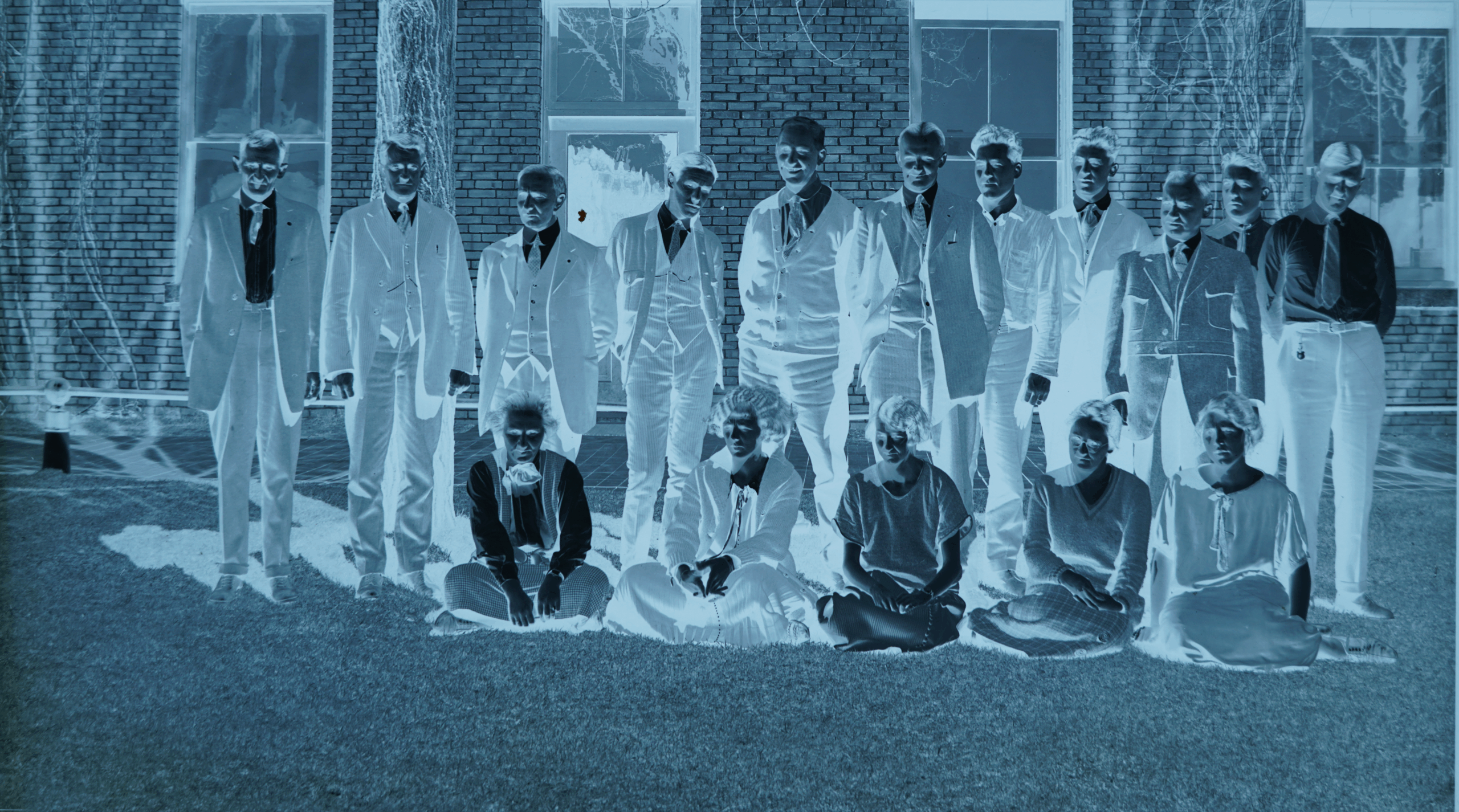Dry Plate Negatives – The Birth of Everyday Photography
If you’ve discovered a box of glass negatives from grandparents or great-grandparents, chances are many are dry plate negatives—the format that brought photography into everyday family life.
By the 1870s, a new photographic technology revolutionized the way people captured their lives: the dry plate negative, a form of glass plate negative. Unlike wet plates, dry plates came pre-coated with gelatin emulsion, could be stored for weeks or months, and were far easier to use. This breakthrough made photography more accessible, fueling both professional and amateur photography well into the early 20th century.
What Is a Dry Plate Negative?
Dry plates used a gelatin silver emulsion that was manufactured and sold ready to use. For photographers, this eliminated the need to prepare plates on the spot—a process that with wet plates had required darkrooms and precise timing. Instead, they could simply load a plate, expose it, and process it later at their convenience.
This flexibility changed everything. Photographers no longer had to carry portable darkrooms into the field. Amateurs could now purchase plates in boxes from suppliers and capture family life, landscapes, or travels without specialized training. Dry plates were even the foundation for the first handheld cameras, paving the way for the snapshot era.
This meant parents could photograph children at home, explorers could document travel, and families could affordably preserve milestones that might otherwise have been lost.
The Rise of Amateur Photography
Dry plates democratized photography in a way no earlier process had. While wet plate photography was the domain of professionals or serious enthusiasts, dry plates meant that anyone with a camera could capture images with relative ease.
- Studios benefited because photographers could prepare multiple sessions without rushing against the clock.
- Scientists and explorers embraced dry plates for documenting discoveries, since plates could be transported and developed later under controlled conditions.
- Families began to use photography more casually, recording children, homes, and community events—ultimately creating family heirlooms to be carried forward in time.
By the 1880s and 1890s, dry plates had become the everyday photographic medium, only gradually replaced by roll film after George Eastman’s Kodak camera arrived in 1888.
Common Sizes of Dry Plates
Like their wet plate predecessors, dry plates were sold in standardized sizes, including:
- Whole plate (6.5 × 8.5 inches): Professional studio portraits.
- Half plate (4.25 × 5.5 inches): General family and documentary use.
- Quarter and sixth plates: Smaller portraits and snapshots.
- Boxed sets: Sold in bulk, sometimes with dozens of plates for amateur photographers.
If you discover a set of glass negatives in a family collection from the late 19th or early 20th century, they are most likely dry plates.
Common Issues with Dry Plates
While sturdier than their wet plate predecessors, dry plates are still fragile and prone to deterioration:
- Emulsion flaking: The gelatin layer can dry out, peel, or crack.
- Silvering: A reflective metallic sheen forms in dark areas as silver migrates to the surface.
- Glass breakage: The thin glass base is prone to cracks, chips, or shattering.
- Improper storage: Plates stored in attics, basements, or stacked without sleeves are especially at risk.
Many families today find their inherited dry plates stacked in shoeboxes, attics, or basements—conditions that often accelerate deterioration.
Preserving Dry Plate Negatives
At Scanthology, we frequently encounter dry plates in family archives. Our non-contact digitization process is the safest way to digitize dry plate negatives, capturing their extraordinary detail and tonal range while safeguarding the originals. Once digitized, families can easily organize, share, and even restore these images—turning fragile heirlooms into a lasting digital legacy.
3 Key Tips for Caring for Dry Plate Negatives at Home
If you are caring for dry plates yourself, here are three essentials to keep in mind:
- Stable environment – Store in cool, dry conditions; avoid temperature swings and humidity.
- Protect surfaces – Use acid-free sleeves or boxes; never stack plates bare.
- Handle carefully – Always lift from the edges; avoid touching the image surface.
Even with careful storage, these plates will eventually degrade. Digitization is the only way to ensure their images survive indefinitely.
Why Preservation Matters
Together, wet and dry plate negatives tell the story of photography’s evolution—from painstaking artistry to widespread accessibility. Wet plates gave us unmatched beauty; dry plates gave us the gift of convenience and the beginnings of popular photography.
Most importantly, these images are unique historical records. Whether they document family milestones, local history, or moments of exploration. That’s why preservation matters—whether you work with Scanthology or not. Families who choose to digitize dry plate negatives ensure that these fragile heirlooms remain accessible for generations.
We are always here to help answer questions and offer guidance, even if you decide to pursue preservation on your own. For us, it’s not just about business—it’s about ensuring these fragile glimpses of the past remain safe, accessible, and meaningful for generations to come.
Digitizing now also allows families to capture names, dates, and stories from living relatives before that knowledge disappears.
Not sure if you’re handling them correctly? Schedule a free consultation with a Scanthologist—we’ll walk you through safe options, even if you’re not ready to digitize yet.
Looking Back
Dry plates built on the foundation laid by the wet plate collodion process, which produced extraordinarily detailed images but required immediate preparation and development. If you missed it, read our post on Wet Plate Negatives: Beauty, Complexity & Fragility to see how photography evolved from artistry in the darkroom to the more practical dry plate era.
Ready to Preserve Your Family’s History?
If you’ve uncovered glass plate negatives—or aren’t sure what type they are—schedule a complimentary consultation with a Scanthologist. We’ll help you understand what you have, answer your questions, and guide you toward safe preservation—whether you choose to work with us or not.
